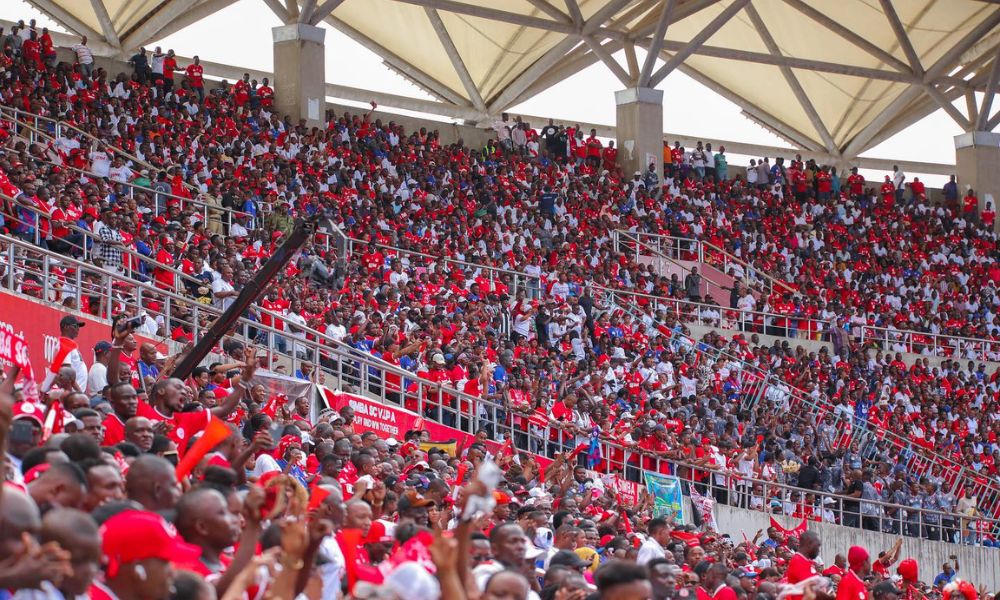You Can’t Sell What No One Sees: The Commercial Case for Local Sports Development in Africa
Gabriel Ajala
October 14, 2025

African sport has talent & passion, but without visibility it cannot grow. From AFCON’s billions of viewers to Tanzania’s 824% media rights boom, this article shows why broadcasting & data are the foundations of commercial growth.
In recent meetings with various African Sports Ministries, a simple question often catches the room off guard: Are all domestic football matches televised?
The silence that follows says everything. This is clearly a reflection of a wider issue across African sports: our leagues often lack the visibility needed to grow commercially.
What isà both a media and an investment problem, African sports leagues remain invisible to fans, sponsors, and investors with no regular broadcasting, data collection, or structured exposure.
Visibility Builds Value
In today's global sports economy, visibility is the foundation of commercial growth. Leagues that are broadcast regularly attract attention, generate data, and gain legitimacy in the eyes of brands and investors.
Sports is a global market. Fans watch sports and competitions of other leagues across the world, due to the accessibility both online, OTT (over-the-top) platforms and traditional media. Therefore, domestic African leagues cannot take their fans for granted in such a competitive landscape which is increasingly digital and international in nature.
Take the Africa Cup of Nations (AFCON) 2023. CAF reported 1.4 billion global television viewers, 2.2 billion digital streams of matches, broadcast across 171 countries via 110 media partners, including 45 Free-to-Air (FTA) channels. Sponsorship revenue increased by 39% from 2021, and Ticketing revenues rose by 800% to 2021. These are impressive numbers and a clear signal that the global demand for African football is present.
While no league can currently command AFCON-level audiences, if they are able to capture even a fraction of the visibility, it could prove transformational for the league. For example, if a domestic league was able to garner 1% - 10% of AFCON tv viewers (14m - 140m), it could reasonably drive 20% - 40%Ã growth in commercial revenues over a 3 - 5 year period. Not only would this bring in several million dollars through broadcast and sponsorship, but as previously mentioned, it'll have a positive impact on ticketing, merchandise and player transfers.
FTA Access Grows the Audience
For most of Africa, FTA broadcasting remains the most effective way to reach mass audiences. Sports like football thrive when accessible, community-based viewership builds loyalty, engagement and scale. Before paywalls and subscriptions, leagues need to prioritise reach and FTA delivers just that.
This isn't just about fans, it's about data. The more people who watch online and attend games, the more meaningful the numbers become for potential sponsors.
Discussions of brand reach, activation, or return on investment are meaningless without an audience.
Community Engagement and Culture Drive the Ecosystem
Broadcasting also plays a cultural role. It helps develop a local sports culture, where communities see their own athletes and teams on screen regularly. This increases participation, pride, fan engagement, ticket & merch sales and a sense of identity around local leagues.
When communities are engaged, leagues evolve beyond mere competitions into platforms for storytelling, influence, and investment. This fosters stronger connections between young fans and their clubs and players, while also encouraging local talent to remain in their domestic leagues for longer as those leagues grow in stature. Crucially, increased visibility enhances the market value of players, thereby generating greater revenue opportunities for clubs.
Data Makes the Case for Investment
Organisations such as Catapult & Opta are already providing data tools that help make African football measurable. Data is non-negotiable for investors, broadcasters, and scouts. It's what turns passion into a product, and games into business assets. It builds 24/7 engagement and opens up countless commercial opportunities for leagues and athletes.
And investors are paying attention.
Tanzania's media-rights value rose from $10.5m to $97m (an 824% increase). While that level of growth won't be replicated uniformly, even a modest transfer of that effect would be material. If domestic leagues captured just 0.824% of Tanzania's percentage growth (i.e., 0.1% of the 824%), a league with $25m in media rights could add roughly $0.2m annually; at 1% of Tanzania's growth (8.24% uplift), the same league could add $2.06m. Factoring this across the continent, the combined media rights market could expand by hundreds of millions of dollars, transforming the financial landscape of African football. The mechanism is straightforward: greater broadcast coverage, more FTA windows, and consistent data capture expand audiences and brand inventory, which in turn lifts media and sponsorship revenues
Secondly, data helps justify and increase player valuations. When clubs have precise metrics on their players (e.g., goals, assists, tackles, distance covered), they can benchmark against global standards and negotiate stronger transfer fees. This directly enhances commercial returns, as clubs generate more income from player sales and attract greater investor interest. On the performance side, coaches also make better decisions with more accurate data, leading to stronger team results, which in turn drives fan engagement and commercial growth..
Strategic Action: Build the Base, Then Monetise
So what must governments and sports federations do to develop and grow? The journey starts with achievable foundations and scales up over time:
Minimum Standards (to start reaping rewards):
Ensure visibility: televise or stream at least 50% of domestic fixtures on Free-to-Air or digital platforms (a combination of live events & highlight packages).
Track basic data: capture core player and team statistics (goals, assists, tackles, minutes played) to benchmark value and engage fans.
Share highlights consistently: distribute short-form clips across YouTube and social media to widen reach and build community.
Next Steps (to scale impact):
Develop structured broadcast strategies that expand coverage beyond domestic borders and stimulate year-round digital engagement.
Partner with specialist analytics providers (e.g., Opta, Catapult) to deepen performance and commercial insights.
Introduce supportive policies/legislation that guarantee consistent audience access, such as mandating a minimum number of matches on FTA.
Long-Term Vision:
This is where the AfCFTA plays a pivotal role. By enabling cross-border broadcasting and trade in services, the market for African sports expands beyond domestic borders, unlocking continent-wide scale.
Conclusion:
African sport is rich with talent, passion, and potential. But visibility is the foundation of growth. Governments and federations don't need to leap to billion-dollar deals, they need to start with minimum standards and build step by step. You can't sell what no one sees, but you also can't grow what isn't first made visible.
Related Posts




